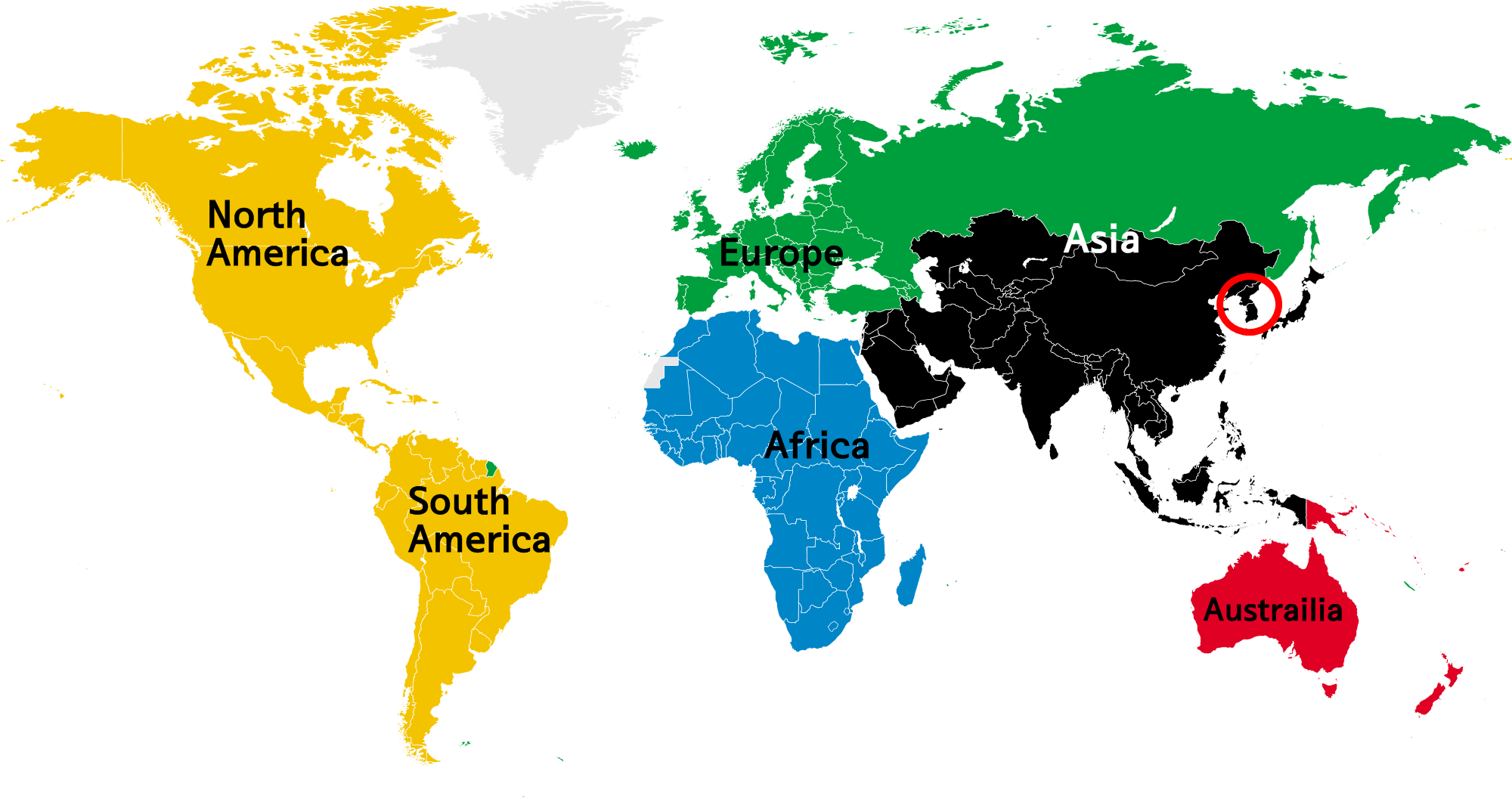 |
|---|
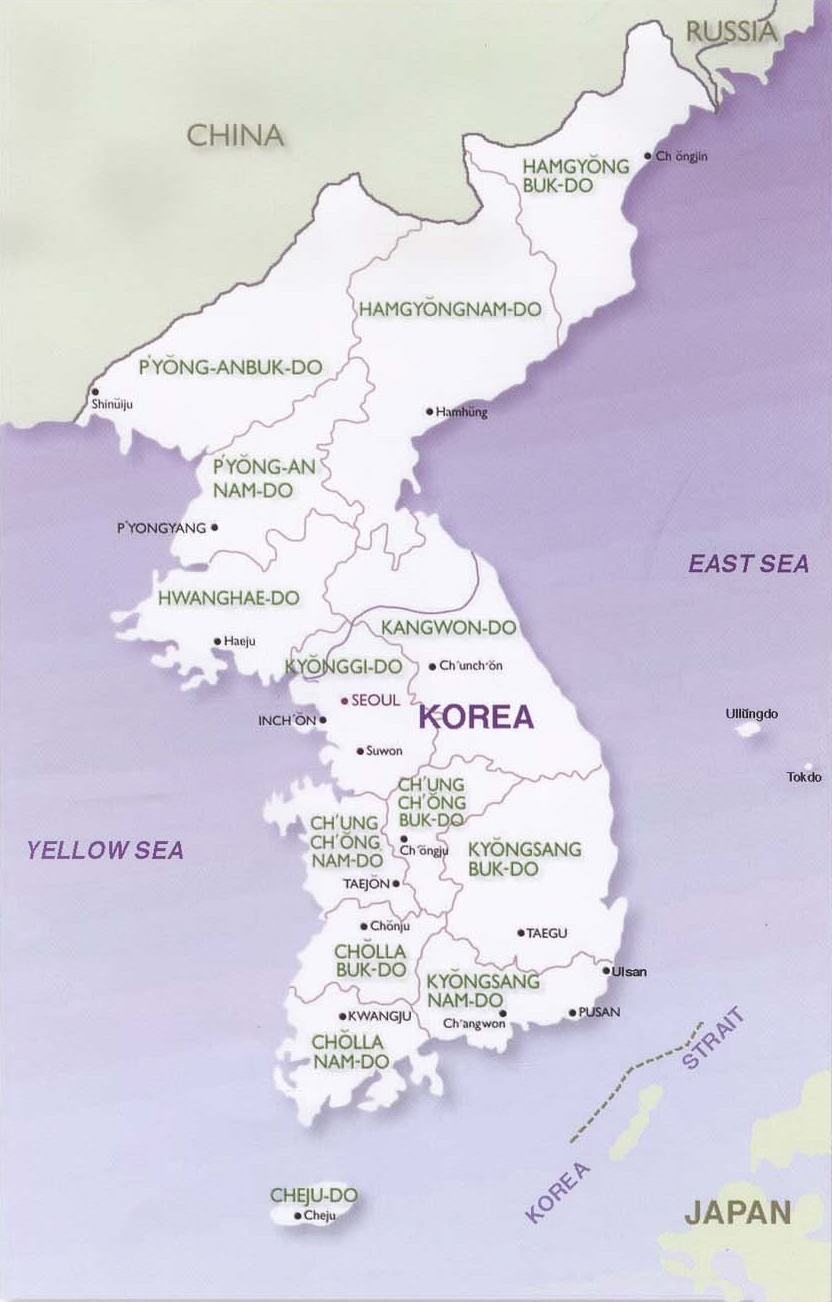 |
The Korean peninsula is located in North-East Asia. Mountains cover 70% of Korea’s land mass, making it one of the most mountainous regions in the world.
Korea’s total land area is 100,033 sq. km, and it has a population of 50million people(2012).
Administratively, the Republic of Korea consists of nine provinces ; the capital Seoul ; and the six metropolitan cities of Busan, Daegu, Incheon, Gwangju, Dajeon and Ulsan. In total, there are 77cities and 88counties.
Geographic Position – Between 33˚ and 43˚ north latitude, and 124˚ and 131˚ east longitude (including Noth Korea)
Highest mountains in S. Korea – Hallasan on Jeju Island, 1,950 meters (6400 ft); Jirisan, 1,915 meters (6,283 ft); and Seoraksan, 1,708 meters (5,604 ft)
Rivers – Nakdonggang, 522 km (313 miles); Hangang, 782 km (289 miles); Geumgang, 396 km (238 miles)
Economic status (2012) – GDP US $ 1,272 billion
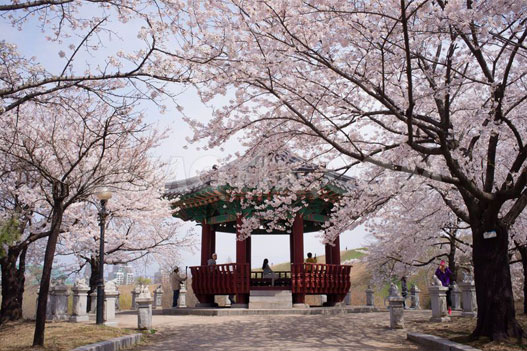 |
 |
|---|---|
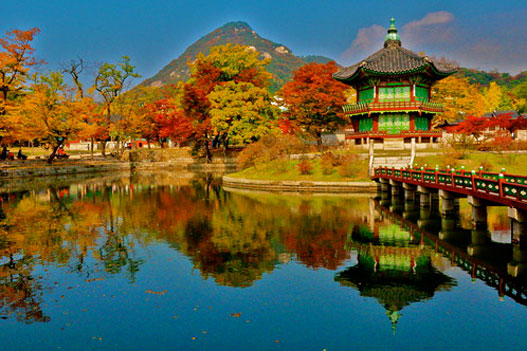 |
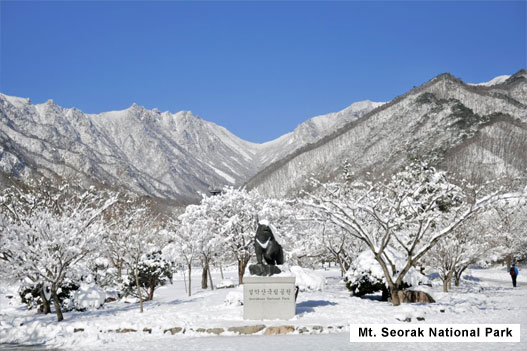 |
Korea has for season ; Spring(March, April, May), Summer(June, July, August), Autumn(September, October, November) and Winter(December, January, February). I think the best time to travel Korea is Spring and Autumn season. During this time, weather is not so cold and not so hot and there are lots of outdoor activities waiting for you. When you travel to Korea in Summer, please check the monsoon season before traveling because it’s heavy raining during monsoon season so feel uncomfortable to see around and lots of outdoor activities could be canceled due to weather conditions.
Spring
Spring last from March to May and is warm. Various flowers, including the picturesque cherry blossom, cover the nation’s mountains and fields during this time.
Summer
Summer last from June to to September. It’s a hot and humid time of the year.
Autumn
Autumn lasts from September to November, and produces mild weather. It is the best season to visit Korea.
Winter
Winter lasts from December to mid-March. It’s cold during winter season due to the influence of cold Siberian air. Heavy snow in the northern and eastern parts of Korea makes for favorable skiing conditions. That means Winter is the perfect time to ski!!
All Koreans speak and write the same language, which has been a decisive factor in forging their strong national identity. Koreans have developed several different dialects in addition to the standard used in Seoul. However, the dialects, except for that of Jeju-do province, are similar enough for native speakers to understand without any difficulties. Linguistic and ethnological studies have classified the Korean language in the Altaic language family, which includes the Turkic, Mongolic and Tungus-Manchu languages.
Hangeul(한글), Korea’s official alphabet, was first invented by King Sejong, who can easily find Korean currency 10,000won bill, during the Joseon Dynasty. Originally called Hunminjeongeum (훈민정음) but the official name for the Korean language was changed to ‘Hangeul’ in 1910.
Hangeul which consists of 10 vowels and 14consonants, can be combined to form numerous syllabic groupings. it’s simple, yet systematic and comprehensive, and is considered one of the most scientific writing system in the world. Hangeul is easy to learn and write, which has greatly contributed to Korea’s high literacy rate and advanced publication industry.
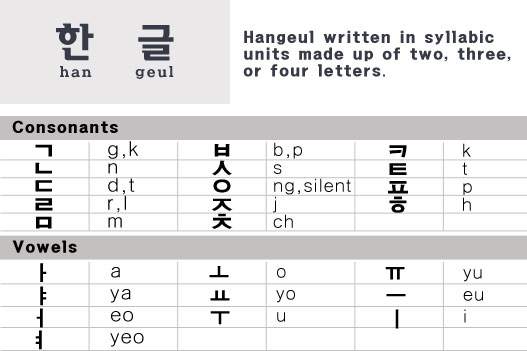
The National Flag of Korea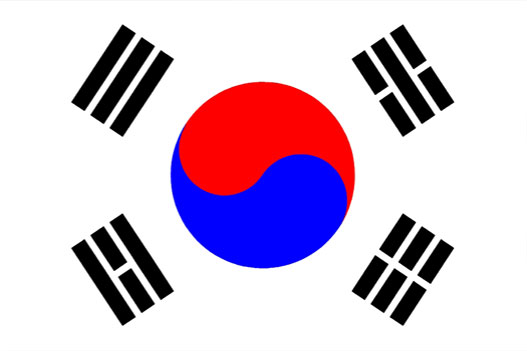 |
The National Flower of Korea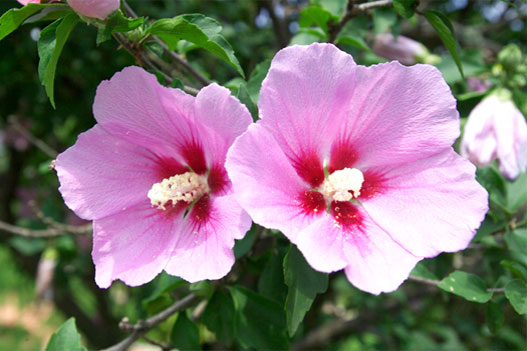 |
|---|---|
The National Anthem of Korea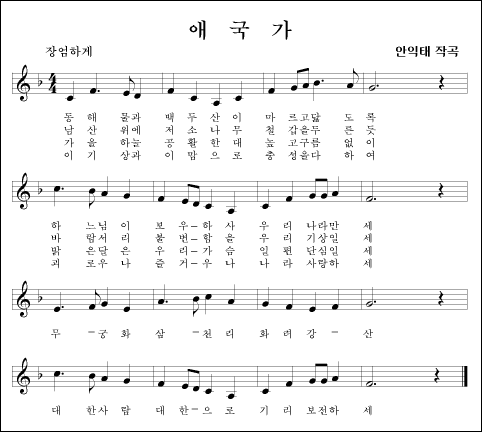 |
|
The National Flag of Korea
The Korean flag (태극기) is called “Taegeukgi” in Korean. Its design symbolizes the principles of the yin and yang in Oriental philosophy. The circle in the center of the Korean flag is divided into two equal parts. The upper red section represents the proactive cosmic forces of the yang. Conversely, the lower blue section represents the responsive cosmic forces of the yin. The two forces together embody the concepts of continual movement, balance and harmony that characterize the sphere of infinity. The circle is surrounded by four trigrams, one in each corner. Each trigram symbolizes one of the four universal elements: heaven (), earth (), fire (), and water ().
The National Flower of Korea
The national flower of Korea is the mugunghwa (무궁화), rose of sharon. Every year from July to October, a profusion of mugunghwa blossoms graces the entire country. Unlike most flowers, the mugunghwa is remarkably tenacious and able to withstand both blight and insects. The flower’s symbolic significance stems from the Korean word mugung, meaning immortality. This word accurately reflects the enduring nature of Korean culture, and the determination and perseverance of the Korean people.
The National Anthem of Korea
Korea’s national anthem is “Aegukga,” which means “Love the Country.” In 1896, the Dongnip Sinmun (Independence News) published various versions of lyrics for this song. It is not known exactly what music they were sung to in the early days. Records show that a Western-style military band was formed during the time of the Dae-han Empire (1897-1910) and that the “Dae-han Empire Aegukga” was composed in 1902 and played at important national functions. The original words of Aegukga appeared in written form around 1907 to inculcate allegiance to the nation and foster the spirit of independence as the country faced threats of foreign annexation. Over the years, the lyrics went through several versions until they were adopted as the national anthem in the present form in 1948. Before the birth of the Republic in 1948, the words were often sung to the tune of the Scottish folk song, Auld Lang Syne. Maestro Ahn Eak-tay (1905-1965), then living in Spain, felt that it was inappropriate to sing this patriotic song to the tune of another country’s folk song. So, he composed new music to go with the lyrics in 1935, and the Korean Provisional Government in exile adopted it as the national anthem. While Koreans outside the country sang the anthem to the new tune, those at home continued to use Auld Lang Syne until Korea was liberated in 1945. In 1948 the government of the Republic of Korea officially adopted the new version as the national anthem and began to use it at all schools and official functions.


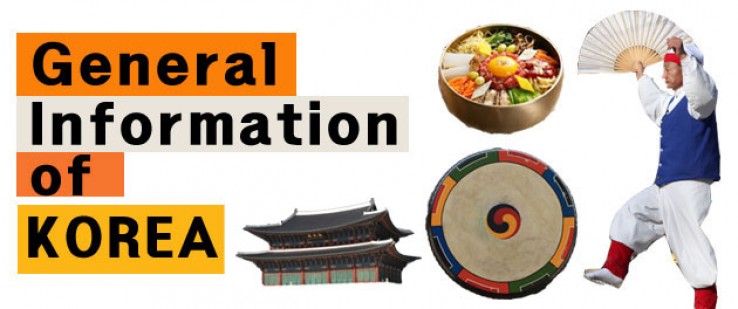
Comments